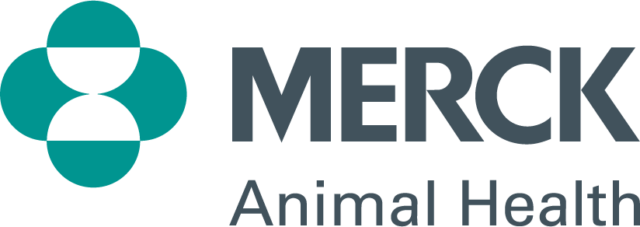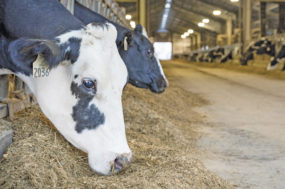Preparing cows’ feet for the transition to a robotic system should be a fairly easy task for most dairy farms to accomplish well in advance. Usually the system and tools needed are already in place to prepare hooves before the robots start, so there are just a few straightforward things to do to ensure hooves are protected during and after transition.
The main thing to remember is: It does not matter what type of robot you have or what type of flow system you use, cows still need to walk to the robot by themselves at some point.
If a cow goes into a new facility (or even stays in a modified facility) and already has poor hoof health, you are basically putting her in a position to milk poorly in the robot and likely become a fetch cow. The key to hoof health is to make it a priority well before a switch to robotic milking.
- Focus on hoof health well before transition. Make sure cows’ feet are as hard as possible before the transition and especially if going into a new barn. Most cows will experience more walking and standing in the early days of transition, and that will make them much more susceptible to hoof problems.
Talk with your farm’s advisers on how you will harden the feet, and be aggressive about accomplishing that goal during the weeks before start-up.
- Get a proper hoof trimming done in advance. Proper hoof trimming starts the process of repairing, healing and regeneration of the hoof. The hoof trimming should be done at least four weeks before the start-up if staying in an existing facility and six to eight weeks prior to introduction to a new barn.
Do not have the trimmer come in five days before the robot starts. A short time frame will not give the feet enough time to heal.
- Smooth the walking surfaces. If you’ve done any concrete repairs or have built a new barn, make sure the concrete alleys have been properly smoothed down and have no rough edges. Run a skid loader blade, pull cement blocks, run alley scrapers – do whatever it takes to smooth down the concrete flooring surface before the cows enter the barn.
- Be aware of the added challenge of a new facility. Are you going into a new facility? If yes, then step your game up another notch. Expose the cows to the facility in advance. Stress-induced lameness can be very common in robotic transitions, and new environments create stress.
I realize for many farms, early introduction will be impossible, so be focused on all of the above preparations so the cows’ feet are at their best and highest level of health.
For those farms that can introduce the cows early: Just do it. No excuses. You may not think you have the time, or it’s too inconvenient, but your payback will be hoof health, reduced stress and easing of the robotic transition by tenfold.
- Look for unique ways to introduce cows to a new facility. The cows do not need to move to the new barn permanently in advance, but being in the new facility, even for a few hours a day or spending one entire day there before they move in, will make a big difference.
If you have exhausted all other options or ideas, and it is not possible to get the milking cows exposed to the new facility, then stock some heifers or dry cows in the new barn to help smooth down the surfaces and smell it all up before your milking herd’s entry. This, too, will help make the barn feel more natural and comfortable.
During the transition, your cows will ideally be at the top of their game in terms of general health – including their feet – so they have the best possible experience during the stress of transitioning.
Your next focus will be ensuring healthy feet on a long-term basis once the robots are operational and you’re successfully transitioned to the new system. And that starts from day one. Your new or renovated facility should be designed to incorporate hoof care as a regular element of herd health, and you should begin using the protocol right away.
- Plan ahead for long-term hoof health. Be proactive on hoof health. Many dairies are planning foot treatment options in their robotic facilities during the design phase by placing footbaths in exit lanes or other areas of the barn.
Other farms are planning foot treatment protocols they will incorporate into their regular operating schedules. Beat the issues before they start by fine-tuning a protocol or installing footbaths in the barn to ensure long-term hoof health.
- Consider multiple options for location of your hoof treatment area. You may be reading this article and already have a crew out working on your new facility – and you just now realize that you did not plan a foot treatment area into your facility. Don’t worry. This happens frequently, and the options on placing them are numerous.
In the past, placing a footbath on the robot exit was common. As time passed, many of us, including myself, have realized that the robot exit is not the best place. Keeping the footbath a bit farther away from the robot seems to benefit activity in the robot and the cleanliness of the footbath.
Today, the most common places we see footbaths are on crossovers, on separation or smart gates, or on robot exits with extending laneways to the feed area. A footbath is not your only option for hoof care, either.
Hoof spraying or having a treatment area with a chute to repair and wrap feet are other options if a footbath is not for you. If you are not sure what to do, just ask an equipment supplier, other producers, consultants or other professionals in the field for innovative hoof care options for your farm.
- Implement the footbath or other protocol from day one. Locations of footbaths vary from farm to farm, but no matter where the location, I recommend you start using the footbath, or other treatment protocol, right away. I am just as guilty as the rest when it comes to putting it off and trying to incorporate it in later.
You are so busy with everything else it just becomes an afterthought. However, the advantages to starting off on the right foot, pun intended, are worth the extra work. Cows will get used to the protocol during the transition, and you will not have to deal with another round of them adjusting to something else that’s new later.
If we are going to be in the barn 24-7 for a period of time moving cows, then sending them through the footbath or getting them into a treatment area as part of our pre-planned operational routine just makes sense from the start.
From hoof trimming to footbaths, the message seems to be the same when discussing robotic milking – and that is plan ahead. Whether it be calling the trimmer six to eight weeks out or looking at technological solutions or treatment protocols, it’s always important to plan for how the future will look well in advance rather than having to solve multiple problems for lack of preparation. PD
PHOTO
The view down a long exit-lane footbath that can be alternated from side to side at Clark Dairy in Mt. Pleasant, Michigan. Clark Dairy started up earlier this year with two robots and 120 cows, and used the bath pretty much every day during the transition into their newly built robotic facility. Photo courtesy of Paul Berdell.

Paul Berdell
Consultant
Robotic Milking Integration Solutions








